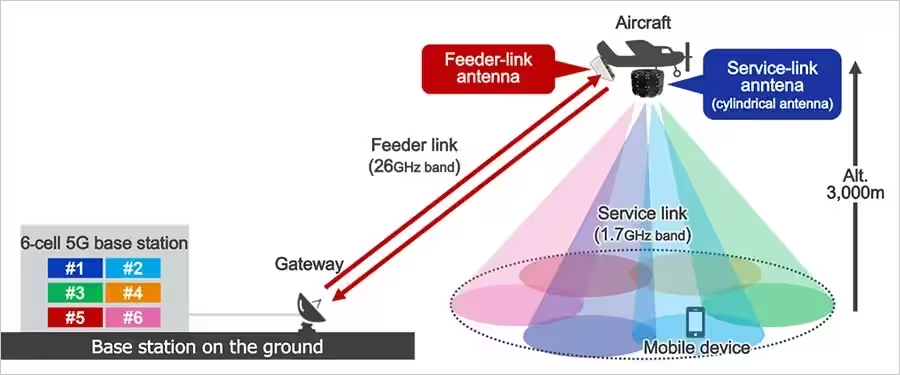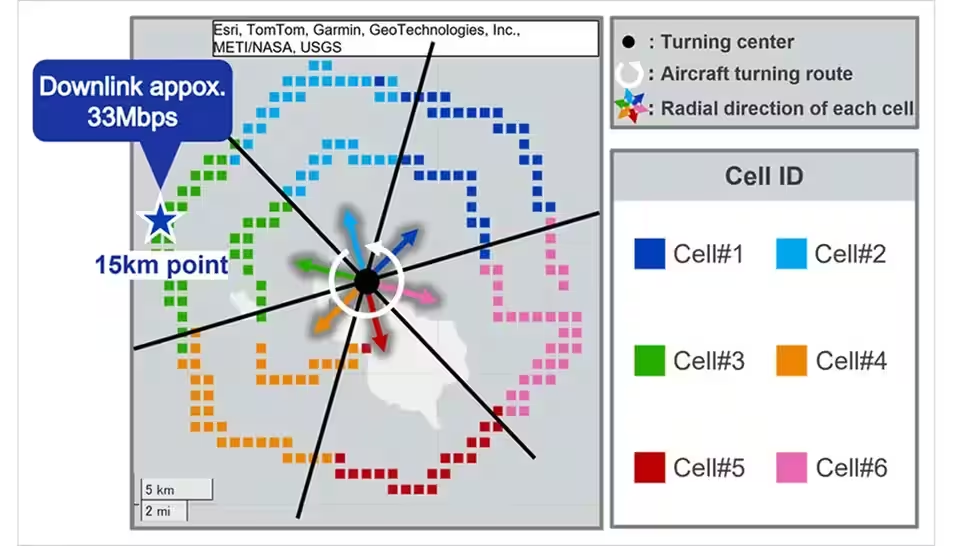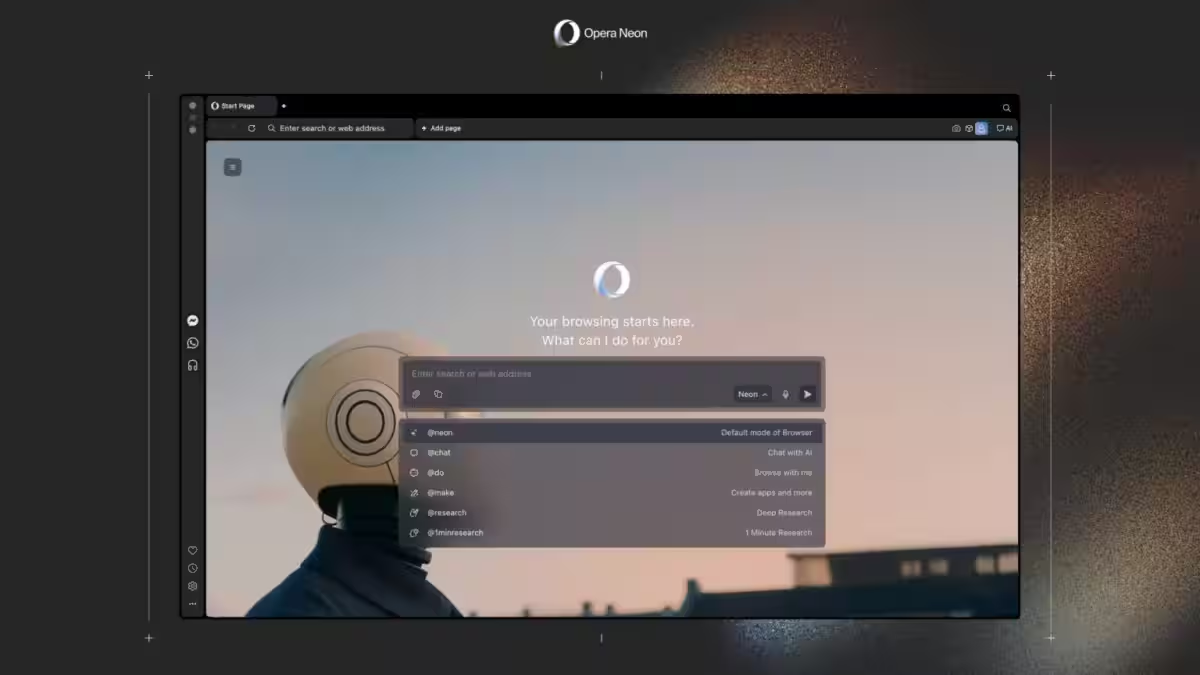SoftBank demonstrates end-to-end 5G connectivity to smartphones on board an airplane

SoftBank has successfully field-tested the technology to provide 5G connectivity via a base station installed aboard a light aircraft raised to an altitude of 3,000 meters. The tests took place in June over the island of Hachijo (Japan). A 26 GHz feeder connection between the ground infrastructure and the aerial platform was used for communication, while the service channel for users operated at 1.7 GHz.
In contrast to most direct communication projects with user devices that rely on low-orbit satellites, SoftBank uses High Altitude Platform Stations (HAPS) located in the stratosphere about 20 kilometers above the ground. This altitude provides significant advantages:
- Lower signal delay compared to satellite communications;
- Reduced transmitter power issues;
- Reduces the Doppler shift effect characteristic of satellite orbital motion.
Use of the 1.7 GHz band for the service channel increases interoperability, as most current 5G smartphones support this frequency range.

Technological highlights of the test
The aircraft payload used directional beamforming technology to create six fixed cells on the ground. The aircraft performed a circular standoff pattern and the system automatically switched coverage every 60 degrees, simulating the behavior of a future stratospheric station and demonstrating the capabilities of stable coverage in a moving airborne platform environment.
The SoftBank Radio Stack combines millimeter-wave communications (up to 26 GHz) from the ground to the aircraft with a channel below 2 GHz for subscriber communications. This enables HAPS to function as intelligent base stations rather than just repeaters. In addition, the company has tested Doppler correction, automatic power control and adaptive beam tracking – key technologies for commercial service in a continuously moving platform environment.
The company has also tested Doppler correction, automatic power control and adaptive beam tracking – key technologies for commercial service in a continuously moving platform environment.
HAPS advantages over satellite communications
In contrast to systems on low-orbit satellites, such as AST SpaceMobile, HAPS cover a larger area with less signal loss and allow for more efficient use of the radio spectrum. International Telecommunication Union (ITU) decisions at WRC-23 authorize operators to use mobile bands (700 MHz, 850 MHz, 1.7 GHz, 2.5 GHz) for HAPS, which greatly expands the deployment options for such systems.
Allow operators to use the mobile bands (700 MHz, 850 MHz, 1.7 GHz, 2.5 GHz) for HAPS.








